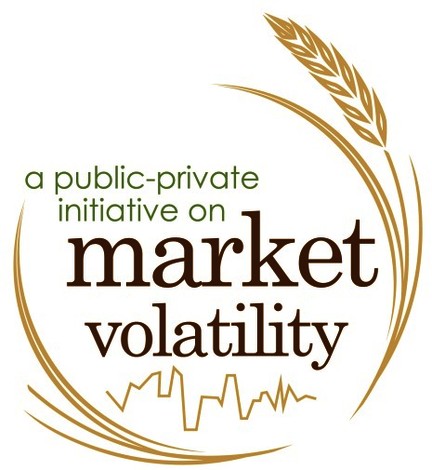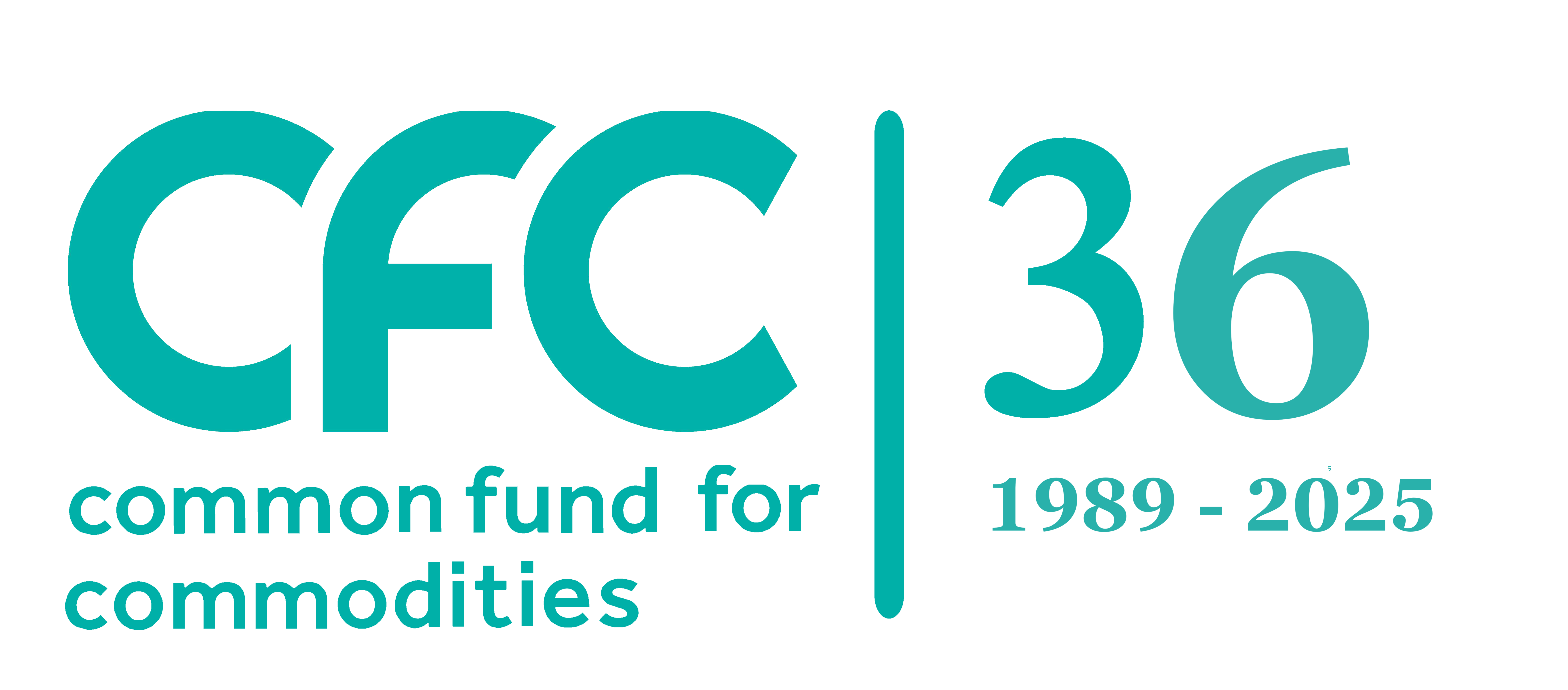Market volatility and commodity dependence
Public-Private Initiative on Commodity Market Volatility
Public and private sector financiers agree on the need for a coordinated response to public concerns about financialization and commodity market volatility. Nevertheless, the views on effective measures to mitigate the problem differ very considerably, and the lack of common understanding of key underlying issues prevents effective joint action. This gap calls for a dialogue to reach agreement on issues of common interest to mitigate commodity market volatility and its costs, as well as to channel financial capital into investments into physical production capacities for key commodities. 
There is a significant gap between development, vs. financial and academic views on commodity derivatives trading, which results in poor and often controversial discussions and, consequently, ineffective action to identify and address the real development problems related to commodity derivatives, price volatility and long term investment incentives and capital flows into primary agriculture. The discussion is divided along the lines of economic schools of thinking (Keynesian vs. Neoliberal) as well as political affiliations.
There is also considerable amount of understanding that, in principle, equitable and fair participation of primary commodity producers in global commodity markets is in everyone's interest, and, further, that the general investing public and long-term investors could be prepared to recognize the consequences of commodity markets on primary commodity producers in developing countries. However, there's no obvious fora where participants from different sides of commodity finance can bring their shared understanding of importance of economic development to the practical level.
While the system of International Commodity Bodies was intended to close the gap, its architecture is aimed to address the balance of interests between producers and consumers, rather than the balance between financial and physical markets. The resulting failure of policymakers and financial sector to act coherently and jointly in the interest of the long term interest of their stakeholders provides an opportunity to CFC to support a public-private dialogue on commodities and financial markets.
The High Level Thematic Debate (HLTD) in the UN in April 2012 revealed that public institutions and the international community are highly critical of the role of financial investors in the commodity sector. It can also be noted that financial sector sees it as its core duty to investors to engage in commodity trades for purposes of hedging, or risk taking, or arbitrage, if justified by investment strategy, and with little or no regard to non-financial consequences of derivatives trade. Furthermore, the financial sector academia is generally in agreement that the involvement of financial traders provides liquidity to commodity markets, making them more efficient which, in turn, benefits all participants; although questions as to the real economic benefit and rationale of high frequency trading activities are posed by a number of academics and researchers.
Recognizing that financial market volumes by far exceed the amounts available for development financing worldwide, public agencies and development institutions must engage with the leading private sector banks involved in commodity derivatives trading who are willing and prepared to commit their time and resources to bridge this gap by establishing of a platform for ongoing dialogue and possibly research program to better understand the key issues and to enable the policy makers to arrive at more informed decisions. The first meeting of the PPI on Commodity Market Volatility took place in New York at UN Headquarters on 25 September 2012, facilitated by De Novo Agricultura. The agreed outcomes of the meeting point strongly to the need for modernised agenda of action in commodity sector, including research on newly emerging issues, effective and feasible practical actions, and better communications.
Commodity Market Volatility and Development: Discussion with ACP and Development Partners
Volatility and uncertainty in the commodity production sector adversely affects producers in developing countries and poses a risk to the sustainable production of staple commodities. The vulnerability of commodity producers to market volatility is important; not just to the developing countries and the international development community but to bankers, trading companies and professional firms involved in international commodity supply chain transactions.
The Brussels 2010 meeting organized by the CFC in collaboration with ACP Group was a practical discussion and examining, from many different viewpoints, the need to address volatility and uncertainty from a developmental and business perspective. A keynote presentation looked at the effects of commodity market financialization and how different proposals for regulatory interventions and other policy measures could mitigate its adverse effects. Recognizing that interaction of financial markets and commodities is a multidimensional phenomenon, the meeting was not one-dimensional; it balanced the objectives of many different stakeholders - the private sector, the public sector, producers, traders, consumers of commodities.
This event atracted thought leaders in commodity finance, business, the development and academic community to examine how to tackle the issue of instability from the perspective of stabilizing supply chain approaches - as well as developmental imperatives which arise from the recent "boom-and-bust" in global commodities markets.
Processing Levels, Diversification and Global Markets
Exports contribute more to growth in middle and high income countries than in low income countries. This is because greater diversity and higher processing levels in export portfolios are associated with broader linkages through ancillary industries that service and supply the export industries.
Part of this growth stems from higher knowledge spillovers and other positive externalities - a result of the tendency for countries with a high proportion of manufactures in exports to have a higher productivity differential between the export and non export sectors than countries who export mainly primary products.
Positive correlations between exports and growth are very strong in developed countries but this is not the case for the least developed countries. Fully processed product exports have significant positive effects on growth rates whereas primary product exports can have low growth effects.
Despite these growth advantages of a diversified export portfolio with higher processing levels, the structure of global markets means that opportunities to diversify are not always available. In fact, on account of having less bargaining power or fewer capabilities to cater to a very demanding market, less developed countries can be confined to low tech sectors that offer fewer spillovers or scale potential. For example, textile production, which has historically been an entry point to diversification and eventual industrial upgrading is increasingly monopolised by China and other large scale producers in Asia. The global buyers of textile manufactures control the highest value added nodes in these global value chains: Branding and retail marketing, and are highly concentrated with tremendous market power. They demand large volume and cheap prices, which makes it difficult for small scale producers to service these markets profitably. Furthermore, as well as cost competition being dominant, buyers also require short lead times, variety and tight logistics which are difficult demands for countries with poor infrastructure to achieve.
Yet without the linkages that develop from serving higher value added industries and the positive externalities that can drive infrastructure growth, CDDCs face greater challenges in achieving the capabilities to serve the markets that could allow them to upgrade and diversify their export sectors. This is one way that Commodity Dependence can become self-perpetuating.
Commodity dependence in Sub-Saharan African Countries
The below chart borrows from *Deaton's 1999 work to show the degree of commodity dependence that still characterises Sub Saharan African countries in 2010 after several decades of independence and some eight years into an unprecedented commodity price boom.
| Country | Commodities with 10% or more of total Exports | Exports as % of GDP |
|---|---|---|
| Angola | Oil (96.8) | 57.95 |
| Belize | Fruit nut (exc oil), fresh or dried (15.3); Oil (21.7); Wheat (10.9) | 62.09 |
| Benin | Cotton (34.7); Oil (15.6) | 14.12 |
| Botswana | Nickel ores, concentrates, etc (17.5); Precious Stones (55.1) | 28.56 |
| Burkina Faso | Cotton (40.9); Gold (32.5) | 11.53 |
| Burundi | Coffee (56.6); Tea (11.2) | 10.73 |
| Cameroon | Oil (33.6); Wood (37) | 27.92 |
| Central African Republic | Precious Stones (24.5) | 14.65 |
| Chad | Cocoa (16.8); Oil (84.5) | 43.90 |
| Congo | Oil (77.4) | 82.27 |
| Cote d'Ivoire | Cocoa (33.4); Oil (27.2) | 40.90 |
| Dem. Rep. of the Congo | Copper (26.3); Milk products, excl butter & cheese (21.3) | 15.49 |
| Djibouti | Base metal ores & concentrates nes (19.5); Copper ores and concentrates (13.8); Live animal excl fish & crustacean (22.1); Oil (12.8); Misc non-ferrous base metals (10.7) | 57.09 |
| Ethiopia | Coffee (27.3); Oil seed etc for soft oil (16.1); Vegetable & vegetable products nes (17.5) | 11.41 |
| Gabon | Coffee (27.3); Oil seed etc for soft oil (16.1); Vegetable & vegetable products nes (17.5) | 52.31 |
| Gambia | Fruit nut (exc oil), fresh or dried (34.9) | 29.30 |
| Ghana | Cocoa (48) | 25.28 |
| Guinea | Aluminium ore concentrate alumina (48.1); Oil (14) | 34.96 |
| Guinea - Bissau | Fruit nut (exc oil), fresh or dried (89.5) | 29.82 |
| Kenya | Crude vegetable materials nes (12.9); Tea (17.8) | 25.96 |
| Lesotho | Precious Stones (30.3) | 49.17 |
| Malawi | Tobacco (58.3) | 26.32 |
| Mali | Cotton (20.7); Gold (58.6) | 26.18 |
| Mauritania | Copper ores and concentrates (11.2); Fresh Fish (13.1); Iron ore and concentrates (45.5) | 47.60 |
| Mauritius | Shellfish (11.8); Sugar, mollasses and honey (12.2) | 45.19 |
| Mozambique | Aluminium (38.9) | 25.25 |
| Namibia | Fresh Fish (14.8); Precious Stones (14) | 38.93 |
| Niger | Live animal excl fish & crustacean (25.5); Radio active & associated materials (25.2); Uranium & thorium ore concentrates (22.4) | 15.04 |
| Nigeria | Oil (80.2) | 39.37 |
| Rwanda | Base metal ores & concentrates nes (23.3); Coffee (15.6); Tea (33.8) | 11.60 |
| Senegal | Oil (24.7) | 24.51 |
| Sierra Leone | Aluminium ore concentrate alumina (12.2); Precious Stones (24.2) | 17.10 |
| Somalia | Live animal excl fish & crustacean (31.5) | 9.79 |
| South Africa | Silver, platinum, platinum metals (11.8) | 25.54 |
| Sudan | Fuel wood excl waste; wood charcoal (16.4); Gold (28.9); Oil (79.5) | 19.77 |
| Swaziland | Essential oils, perfumes & flavours (16.3); Sugar, mollasses and honey (20.2) | 58.10 |
| Togo | Cocoa (11.4); Lime cement construction material (13.1); Oil (10.1) | 41.54 |
| Uganda | Coffee (19.8) | 24.02 |
| Tanzania | Gold (17.5); Precious Metals (11.5) | 23.98 |
| Zambia | Copper (68.1) | 44.10 |
| Zimbabwe | Tobacco (13.9) | 37.33 |
*(Deaton, A. (1999). "Commodity Prices and Growth in Africa." The Journal of Economic Perspectives 13(3): 23-40)

.png)